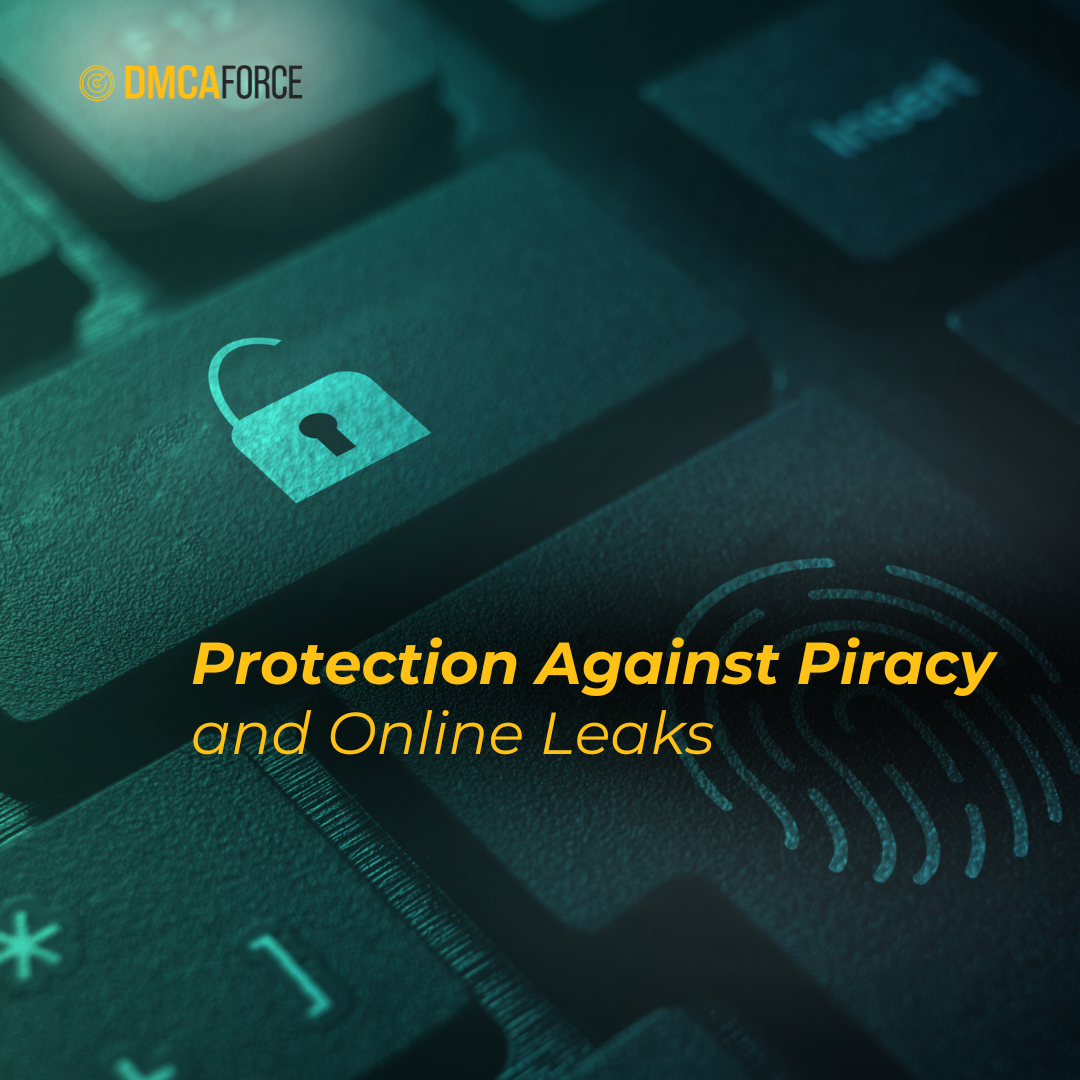News

The Risks of False DMCA Claims
The rise of artificial intelligence (AI) has revolutionized the way we live and work, but it has also created new challenges in the fight against online piracy, adding the risks of false DMCA claims to the list of things to worry about for creators. On one hand, AI-powered tools have made it easier for copyright holders to detect and remove infringing content from the internet. On the other hand, pirates have also leveraged AI to evade detection and distribute copyrighted materials on a massive scale.
AI-powered algorithms can quickly scan vast amounts of data to identify and remove infringing content, making it easier for copyright holders to protect their intellectual property. Additionally, AI-driven systems can analyze user behavior and identify patterns that may indicate piracy, allowing for more targeted enforcement efforts.
However, pirates have also adapted to these new tools by using AI-generated content that is designed to evade detection. For example, AI-powered video editing software can create convincing fake videos that are difficult to distinguish from original content. Similarly, AI-driven bots can rapidly upload and distribute pirated materials across multiple platforms, making it challenging for authorities to keep up.
Fighting the Risks of False DMCA Claims: How do I dispute a DMCA claim?
Due to the contact evolution of digital tools, it s important to understand the risks of false DMCA claims and how to counter them. If you receive a DMCA takedown notice and believe that the material was removed unfairly, you can dispute the claim by filing a counter-notice. Here’s a step-by-step guide to help you through the process:
Review the Takedown Notice: Carefully read the DMCA takedown notice to understand the allegations and identify the specific content that was removed. Learn more about takedowns here.
Check if You Have a Valid Defense: Determine if you have a valid defense for using the material, such as fair use, public domain, or permission from the copyright holder.
Gather Evidence: Collect evidence to support your claim, including any relevant documentation, licenses, or permissions.
Prepare Your Counter-Notice: Write a counter-notice that includes:
- Your physical signature
- Identification of the material removed or disabled
- The location of the material before it was removed
- A statement under penalty of perjury that you have a good faith belief that the material was removed due to mistake or misidentification
- Your contact information
- A statement consenting to jurisdiction of the court
Submit Your Counter-Notice: Send your counter-notice to the online service provider (OSP) that removed your content. Make sure to follow their specific procedures for submitting counter-notices.
Wait for Response: The OSP will forward your counter-notice to the copyright holder and notify them that they have 10-14 business days to file a lawsuit against you. If they do not take legal action, the OSP will reinstate your content within 10-14 business days.
Remember to carefully review and comply with all applicable laws and regulations when filing a counter-notice. If you’re unsure about any part of the process, consider consulting with an attorney specializing in copyright law.
What happens if I get a DMCA takedown notice?
If you receive a DMCA takedown notice, it means that someone has claimed that you have infringed on their copyrighted material, such as music, videos, images, or written content. Here’s what happens next:
Removal of Content: The online service provider (OSP) that hosts your content will remove or disable access to the allegedly infringing material. This is usually done within 1-3 business days.
Notification: You’ll receive a notification from the OSP explaining why your content was removed and providing information on how to file a counter-notice if you believe the removal was unfair.
Your Options:
- Do Nothing: If you don’t respond, the OSP will keep the content removed. You may also face further action from the copyright holder.
- File a Counter-Notice: If you believe the removal was unfair, you can file a counter-notice claiming that your use of the material is legitimate. This must be done within 10-14 business days.
- Remove Infringing Material: If you realize that you did infringe on someone’s copyright, you can remove the material and avoid further action.
Consequences:
- Repeat Infringer Policy: If you receive multiple DMCA takedown notices, your OSP may terminate your account or impose other penalties.
- Legal Action: The copyright holder may take legal action against you if they believe their rights have been infringed.
- Damage to Reputation: Repeated instances of copyright infringement can harm your online reputation and credibility.
What to Do Next:
- Review the takedown notice carefully and ensure it meets legal requirements.
- Check if you have permission to use the copyrighted material or if it falls under fair use provisions.
- Respond promptly to avoid further action from the OSP or copyright holder.
- Consider seeking legal advice if you’re unsure about how to proceed.
Remember, it’s essential to respect intellectual property rights and take DMCA takedown notices seriously.
What happens if you ignore DMCA?
If you ignore a DMCA takedown notice, it can lead to serious consequences. Here’s what might happen:
Account Suspension or Termination: The online service provider (OSP) that hosts your content may suspend or terminate your account, which means you’ll lose access to your account and all associated data.
Legal Action: The copyright holder may take legal action against you, which can result in lawsuits, fines, and even criminal charges. You could be liable for damages, including statutory damages of up to $150,000 per infringement.
Damage to Reputation: Ignoring a DMCA notice can harm your online reputation and credibility. It may lead to a loss of trust from your audience, customers, or business partners.
Repeat Infringer Policy: If you receive multiple DMCA notices and ignore them, the OSP may implement their repeat infringer policy. This could result in permanent account termination and legal action.
Court Orders: If the copyright holder obtains a court order against you, you may be required to pay damages, attorney’s fees, and other costs. You could also face injunctions that force you to stop using the infringing material.
Criminal Charges: In extreme cases, ignoring a DMCA notice can lead to criminal charges. You could face fines of up to $500,000 and imprisonment for up to five years for criminal copyright infringement.
Loss of Safe Harbor Protection: If you’re an OSP or website owner, ignoring DMCA notices can result in the loss of safe harbor protection under the Digital Millennium Copyright Act (DMCA). This means you’ll be liable for any copyright infringement that occurs on your platform.
It’s essential to take DMCA takedown notices seriously and respond promptly. Ignoring them can lead to severe consequences that can damage your reputation and finances.
How do you counter DMCA takedown?
If you receive a DMCA takedown notice and believe it was unfair, you can counter it by filing a counter-notice. Here’s how:
Understand the Process: Before filing a counter-notice, make sure you understand the DMCA process and the requirements for a valid takedown notice.
Review the Takedown Notice: Carefully review the takedown notice to ensure it meets legal requirements. Check if the notice includes:
- A physical or electronic signature of the copyright owner or their agent
- Identification of the copyrighted work claimed to be infringed
- Identification of the material that is claimed to be infringing
- Information reasonably sufficient to permit the service provider to locate the material
- A statement that the complaining party has a good faith belief that use of the material is not authorized by the copyright owner
- A statement that the information in the notification is accurate, and under penalty of perjury, that the complaining party is authorized to act on behalf of the owner
Gather Evidence: Collect evidence to support your claim that your use of the material is legitimate. This may include:
- Proof of permission from the copyright owner
- Evidence of fair use or other legal exceptions
- Documentation showing your good faith effort to identify and remove infringing material
File a Counter-Notice: Submit a counter-notice to the online service provider (OSP) that removed your content. The counter-notice must include:
- Your physical or electronic signature
- Identification of the material removed or disabled
- A statement under penalty of perjury that you have a good faith belief that removal was based on mistake or misidentification
- Your name, address, and phone number, and a statement consenting to jurisdiction
Wait for Response: The OSP will forward your counter-notice to the complaining party. If they do not respond within 10-14 business days, your content may be restored.
What qualifies as a DMCA violation?
A DMCA (Digital Millennium Copyright Act) violation occurs when someone infringes on a copyright holder’s exclusive rights, such as reproducing, distributing, or displaying copyrighted material without permission. Here are some common examples of DMCA violations:
Copyrighted Material: Using someone else’s creative work, such as:
- Music, videos, or audio files without permission
- Images, photos, or graphics without proper licensing
- Written content, like articles, blog posts, or ebooks without permission
Infringing Activities: Engaging in activities that violate copyright laws, including:
- Downloading or sharing copyrighted files through peer-to-peer networks
- Streaming copyrighted content without permission
- Selling or distributing counterfeit goods with copyrighted materials
Lack of Permission: Failing to obtain necessary permissions or licenses to use copyrighted material, such as:
- Using a song in a video without obtaining a synchronization license
- Displaying someone else’s artwork on your website without permission
- Reproducing and distributing copyrighted software without a license
Fair Use Exceptions: While fair use provisions allow limited use of copyrighted material for purposes like criticism, commentary, news reporting, teaching, or research, it’s essential to ensure that your use meets the fair use criteria.
DMCA Violation Examples:
- Uploading a movie to YouTube without permission from the copyright holder
- Sharing an ebook on a file-sharing platform without the author’s consent
- Using a company’s logo on your website without their permission
Fight the risks of false DMCA claims with DMCA Force services.
How to Protect Your OnlyFans Content from Online Leaks and Piracy
November 15, 2024

Protect Your Content on Telegram: Using DMCA Claims to Combat Piracy
November 13, 2024

Unlock Your Revenue Potential at the AW Summit 2024 in Bucharest!
September 10, 2024
Got questions about protecting your digital assets from copyright infringement?


